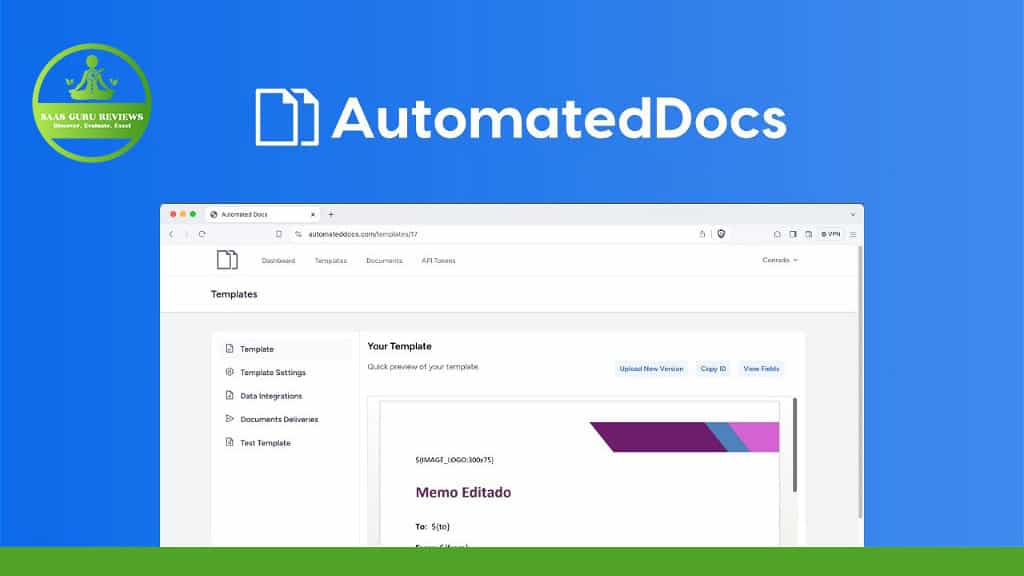In the fast-paced digital world, businesses and individuals are constantly seeking ways to streamline their processes and enhance efficiency. Document creation, a fundamental aspect of any organization, is no exception. This article delves into the transformative power of AI in automating document generation, offering a comprehensive guide on how to leverage technology to optimize your document workflows. Whether you’re drowning in paperwork or simply looking to get ahead, understanding how AI can automate and revolutionize document creation is invaluable. Read on to discover the future of document management and how it can save you time, reduce human error, and elevate the quality of your work.
Outline:
- What Is Document Automation and How Can AI Enhance It?
- Why Is Automating Document Generation Essential Today?
- How Does AI Transform the Document Creation Process?
- What Are the Key Use Cases for Document Automation?
- Can AI Integrate Seamlessly with My Existing Workflow?
- How to Choose the Right Document Automation Products?
- What Are the Benefits of Automating Document Workflows?
- How to Ensure Accuracy and Compliance in Automated Documents?
- What Does the Future Hold for AI in Document Processes?
- Steps to Implement AI-Powered Document Automation in Your Business
What Is Document Automation and How Can AI Enhance It?
Document automation, also known as document generation, refers to the use of software to create digital documents. This technology allows users to generate various types of documents quickly and with fewer errors by automating repetitive tasks. AI enhances this process by introducing intelligent algorithms that can understand and predict user needs, further streamlining the creation process. By leveraging templates and integrating data from multiple sources, AI-powered document automation can produce complex documents with minimal manual input.
Why Is Automating Document Generation Essential Today?
In a world where the number of documents a business handles can be overwhelming, automating document generation is not just a luxury—it’s a necessity. Automation reduces the time-consuming and error-prone process of manual data entry, which can lead to significant cost savings. It also allows employees to focus on more strategic tasks that require human intelligence, thus increasing overall productivity and competitiveness.
How Does AI Transform the Document Creation Process?
AI transforms the document creation process by introducing machine learning algorithms and natural language processing. These technologies enable the automated system to learn from previous documents and user interactions, optimizing the creation process over time. AI can also analyze unstructured data and convert it into a structured format that fits into predefined templates, making the process of creating complex documents more efficient.
What Are the Key Use Cases for Document Automation?
Document automation can be applied in various fields, from legal to healthcare, finance, and beyond. Key use cases include generating standard contracts, invoices, and reports. It can also be used for more complex documents like personalized marketing materials or detailed technical manuals. In each case, automation ensures a high level of efficiency and consistency.
Can AI Integrate Seamlessly with My Existing Workflow?
One of the biggest concerns for businesses is whether new technology can align with their existing workflows. AI-powered document automation tools are designed with integration in mind. Many can seamlessly integrate with popular platforms like Google Docs, Excel, and various CRM systems, allowing for a smooth transition and immediate enhancement of document processes.
How to Choose the Right Document Automation Products?
Choosing the right document automation products depends on your specific needs. Consider factors such as the types of documents you need to generate, the complexity of your data, and the level of customization required. Look for products that offer seamless integration, user-friendly interfaces, and robust support. It’s also important to consider the scalability of the solution as your business grows.
What Are the Benefits of Automating Document Workflows?
Automating document workflows offers numerous benefits, including time savings, reduced risk of human error, and improved document accuracy. It also enhances the ability to maintain up-to-date documents, as data can be pulled from live sources. Additionally, automation can improve compliance by ensuring that all documents adhere to the latest regulations and standards.
How to Ensure Accuracy and Compliance in Automated Documents?
To ensure the accuracy and compliance of automated documents, it’s crucial to set up the automation system correctly from the start. This involves configuring templates using conditional logic, integrating reliable data sources, and applying consistent formatting. Regular audits and updates to the automation rules and templates can help maintain compliance with changing regulations.
What Does the Future Hold for AI in Document Processes?
The future of AI in document processes is promising, with advancements in AI technologies continually enhancing the capabilities of document automation systems. We can expect to see more sophisticated natural language processing, better integration with various data sources, and even predictive analytics that anticipate user needs. The revolution in document creation is just beginning.
Steps to Implement AI-Powered Document Automation in Your Business
To implement AI-powered document automation, start by assessing your current document workflows and identifying areas that can benefit from automation. Next, research and select a document automation tool that fits your needs. Then, customize your templates and integrate your data sources. Finally, train your team on the new system and monitor its performance, making adjustments as needed.
Summary of Key Points:
- AI-powered document automation streamlines the creation of various document types, saving time and reducing errors.
- Automating document generation is essential for modern businesses to remain competitive and efficient.
- AI enhances document automation by learning from data and user interactions, optimizing over time.
- Document automation can be seamlessly integrated into existing workflows with minimal disruption.
- When selecting automation tools, consider your specific document needs, integration capabilities, and scalability.
- Regular audits and updates are important to maintain accuracy and compliance in automated documents.
- The future of document automation is bright, with AI technologies continuing to evolve and improve.
- Implementing AI-powered document automation involves assessing current workflows, selecting the right tool, customizing templates, integrating data, and training your team.
Embrace the revolution of AI in document generation and witness the transformative impact it can have on your business operations.



